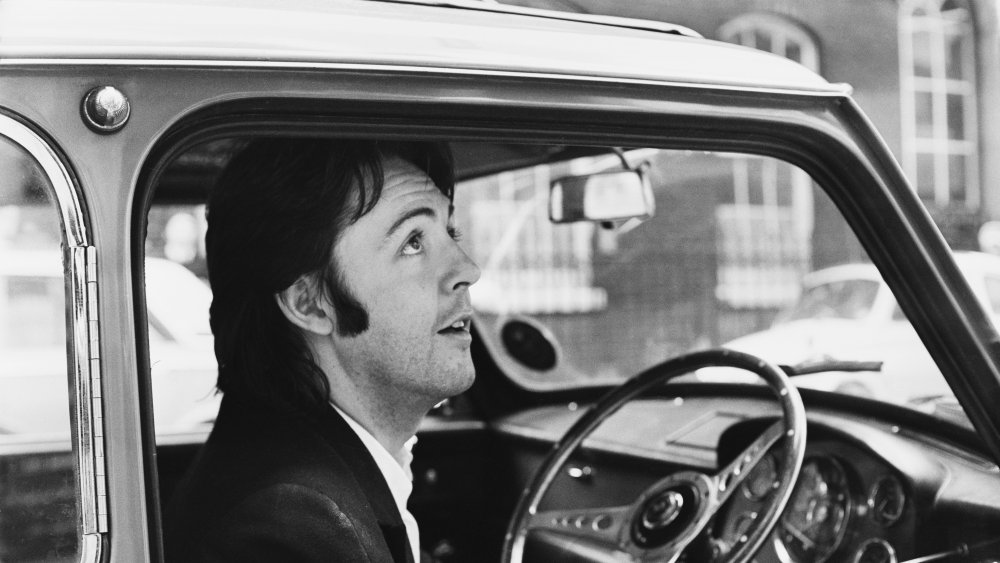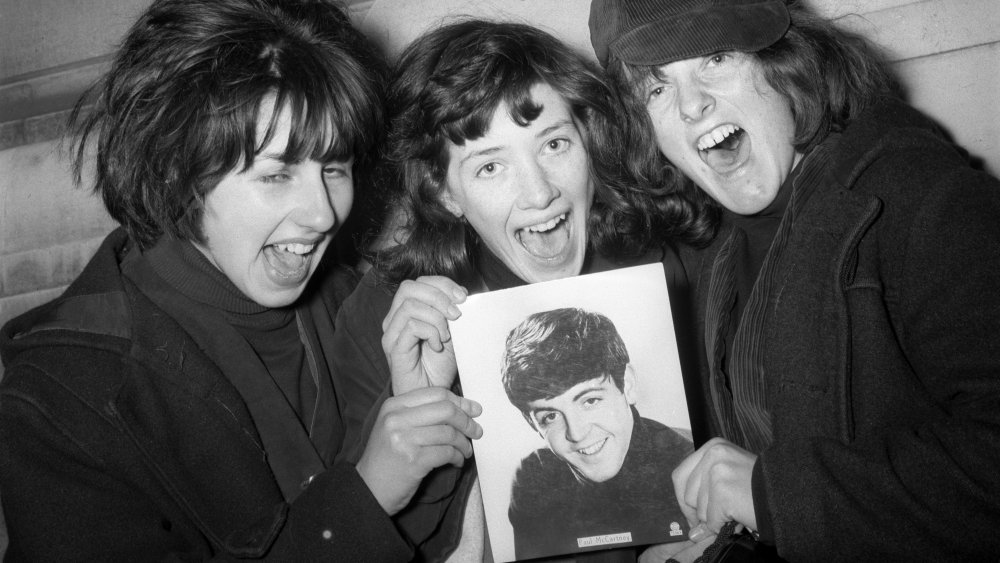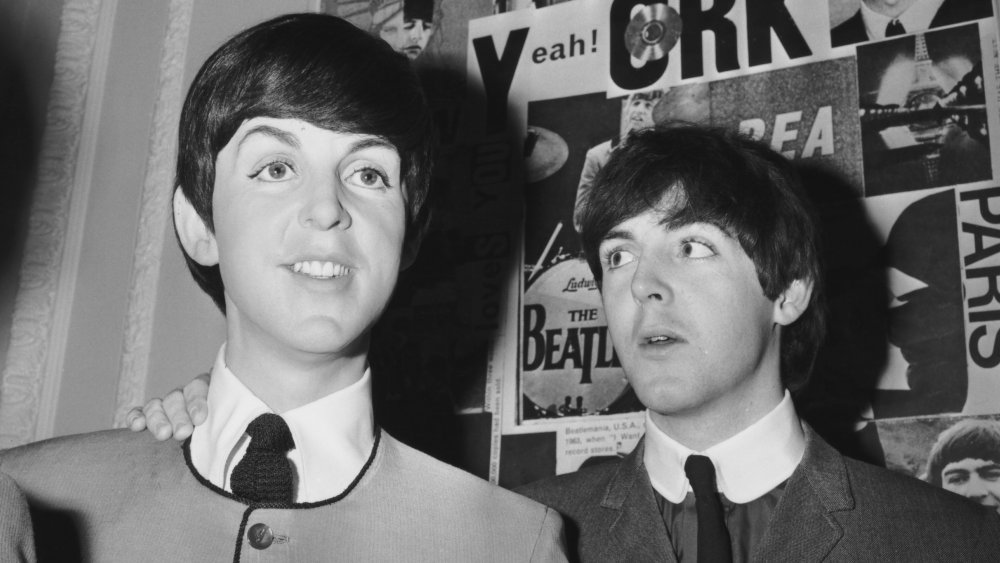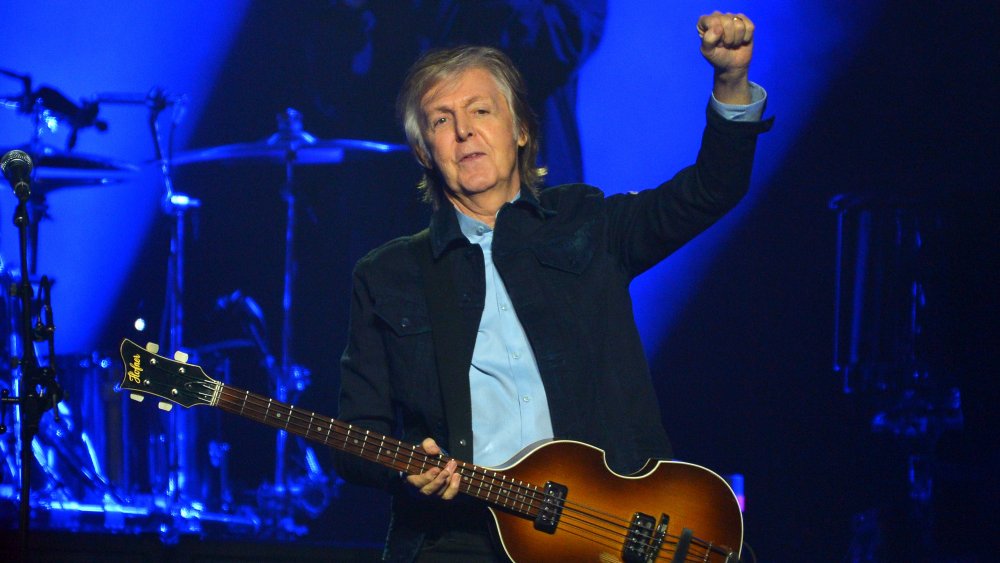The Truth About The Paul McCartney Car Crash Myth
Even if you're not a huge Beatles fan, you probably know something about one of the greatest conspiracy theories in rock music history. It is an idea that has captured the imaginations of cryptic-minded listeners and stoned truth-seekers for more than five decades. It is the rumor that Paul McCartney, the principal singer-songwriter alongside John Lennon in the Beatles since their formation in the late 1950s, is dead, and has been since a gruesome car accident sometime around the end of 1966.
According to Gadfly Online: "As the story goes, on an evening in November 1966 (probably the eighth, a "stupid bloody Tuesday"), an argument took place between McCartney and the other Beatles at Abbey Road Studios. A livid McCartney stormed out of the building, hopped into his Aston Martin and sped off into the night. In his anger, he failed to notice the traffic light change and he spun out of control, smashing into a light pole at full speed, thus decapitating him."
Replacing Paul McCartney
But the theory gets even weirder; the Beatles and their management, realizing the huge financial losses that might result from announcing the death of one of the members of the biggest band in the world, decided to cover up his death. They drafted in a replacement, who has been masquerading as McCartney ever since. The replacement, originally called William Campbell or, more recognizably, Billy Shears, according to Salon, and known as "Faul" to true believers of the theory, has, if the story is true, written some of the Beatles' greatest work, fathered four children with Paul's first wife, Linda McCartney, went on to establish the mega-popular band Wings, and had success with 20 solo albums, all under the moniker of the tragically deceased songwriter he replaced on the fly.
Proponents of the theory point to a litany of perceived evidence on the Beatles' later album covers and cryptic mumblings and backmasked lyrics that refer to Paul's death. But how did such an out-there rumor take hold?
Early rumors of Paul McCartney's death
It is amazing how bizarre theories seem to be able to spread organically and how, once established, they become near impossible to eradicate.
The myth of Paul McCartney's early death is traceable to a couple of disparate sources. The first is an incident from around January 7, 1967, when rumors spread around London's Fleet Street that McCartney had been killed on the M1 Motorway between London and the northern city of Leeds. According to Gadfly Online, the night was very icy, which may have put the rumor in the heads of some London journalists, who were always keen for a Beatles story. The story was found not to be true after the Beatles' press officer called Paul's home and the phone was answered by the man himself. Meanwhile, Hoaxes claims that Paul's car did crash that night, but he wasn't behind the wheel.
If this was the night when the seed of the rumor was sewn, it would be two years later when the theory really took off, particularly among teenagers in the American Midwest, after a song titled "Saint Paul" achieved widespread success in the region in May 1969, according to Hoaxes. In September, an article appeared in the student paper of Drake University in Des Moines, Iowa, which asked: "Is Paul McCartney Dead?" Though it didn't get much attention at the time, the article was an early indicator that a crazy theory was on the horizon.
Fifty years of 'Paul is Dead'
Skeptoid describes a phone call to the radio DJ Russ Gibb from an Eastern Michigan University student on October 12, 1969. The student convinced the DJ that McCartney was dead, with clues found throughout the later Beatles discography when certain songs were played backward. Gibb ran with the story on-air for several hours, treating his listeners to backward snippets of supposed hidden messages.
Listening to this show was another student, Fred LaBour, who wrote for the Michigan Daily student newspaper. In the years since, LaBour has admitted that it was he who confected many of the 'clues' believed by conspiracy theorists to cryptically point to Paul's death. It is he, too, who invented the details of the death that conspiracy buffs still cling to till this day:
"Paul McCartney was killed in an automobile accident in early November, 1966 after leaving EMI recording studios tired, sad, and dejected. The Beatles had been preparing their forthcoming album, tentatively entitled Smile, when progress bogged down in intragroup hassles and bickering. Paul climbed into his Aston-Martin, sped away into the rainy, chill night, and was found four hours later pinned under his car in a culvert with the top of his head sheared off."
McCartney has been light-hearted about the issue. According to LiveScience, in 1969, at the peak of the phenomenon, McCartney said: "Rumors of my death have been greatly exaggerated. However, if I was dead, I'm sure I'd be the last to know."



